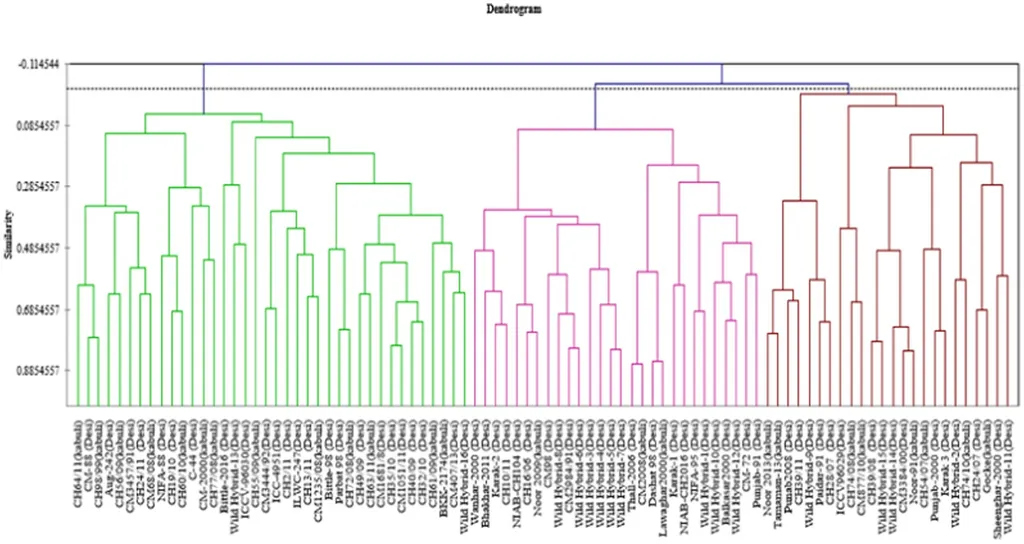In the heart of Pakistan’s arid and semi-arid regions, a crucial crop is gaining attention from researchers aiming to boost food security and agricultural productivity. Chickpea, a vital pulse crop, is the subject of a recent study published in ‘Agrosystems, Geosciences & Environment’ (or in English, ‘Agricultural Systems, Geosciences & Environment’), which delves into the genetic variability and heritability of yield traits in advanced chickpea genotypes. This research, led by Aizaz Akbar from the Department of Plant Breeding and Genetics at The University of Agriculture Peshawar, offers promising insights for farmers, breeders, and the broader agricultural community.
The study, conducted during the Rabi 2020–2021 season, evaluated 18 advanced chickpea genotypes to assess their genetic diversity and heritability for key yield traits. The findings revealed significant variation among the genotypes for traits such as seed yield, days to emergence, flowering, plant height, biological yield, and days to maturity. This genetic diversity is a goldmine for breeders looking to develop high-yielding, resilient chickpea varieties.
“Agricultural productivity is crucial for food security, especially in regions prone to environmental stresses,” Akbar explained. “Our study highlights the potential for genetic improvement in chickpea, which can lead to more robust and productive cultivars.”
The research also uncovered moderate to high heritability estimates for key agronomic traits, indicating that these traits can be effectively passed on to future generations of plants. This is a boon for breeders aiming to develop new varieties through selective breeding.
Genotypic and phenotypic correlation analyses further revealed strong positive associations of seed yield with several traits, including days to 50% emergence, flowering, plant height, seeds per pod, days to maturity, and biological yield. These findings suggest that breeders can use these traits as effective selection indices to enhance seed yield.
Among the genotypes studied, SL‐03‐29, MG5, and NDC‐4‐20‐2 stood out for their higher seed yields and are recommended for advanced yield trials and multilocation evaluations. Additionally, early-maturing genotypes such as NDC‐15‐01, NDC‐4‐20‐4, and NDC‐4‐20‐5 could be particularly useful in breeding programs aimed at developing early maturing cultivars, which can be crucial for farmers looking to optimize their growing seasons.
The implications of this research extend beyond the field. As the global population continues to grow, the demand for nutritious and sustainable food sources is on the rise. Chickpea, with its high protein content and adaptability to harsh environments, is a valuable crop for meeting these demands. By leveraging the genetic diversity and heritability identified in this study, breeders can develop chickpea varieties that are not only high-yielding but also resilient to environmental stresses, such as drought and heat.
“This research is a stepping stone towards developing chickpea varieties that can thrive in challenging conditions,” Akbar noted. “It’s about creating a more secure and sustainable future for agriculture.”
The study, published in ‘Agrosystems, Geosciences & Environment’, offers a roadmap for future breeding programs and highlights the importance of genetic diversity in crop improvement. As the agricultural sector continues to evolve, such research will be instrumental in shaping the future of food production and security.

